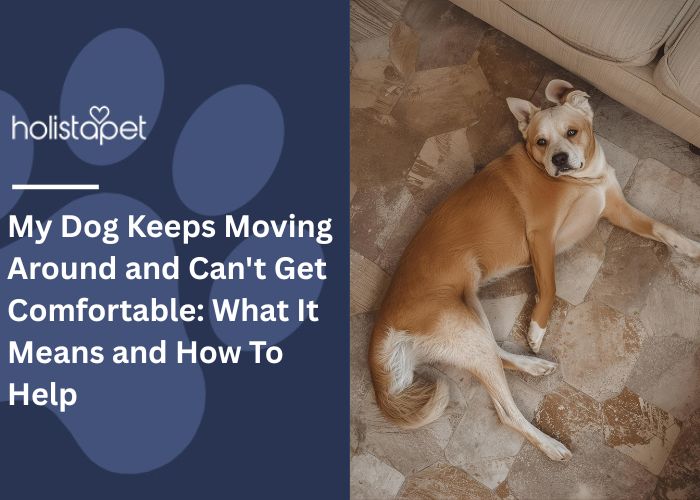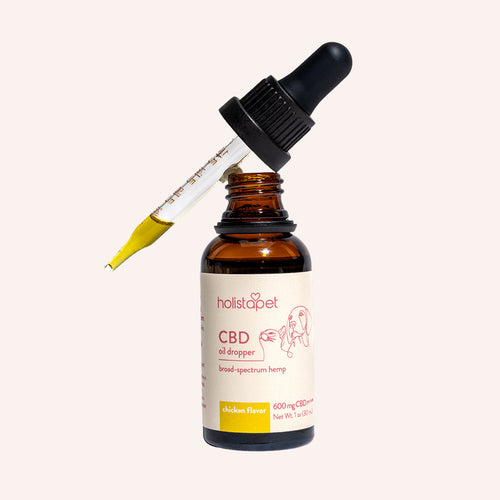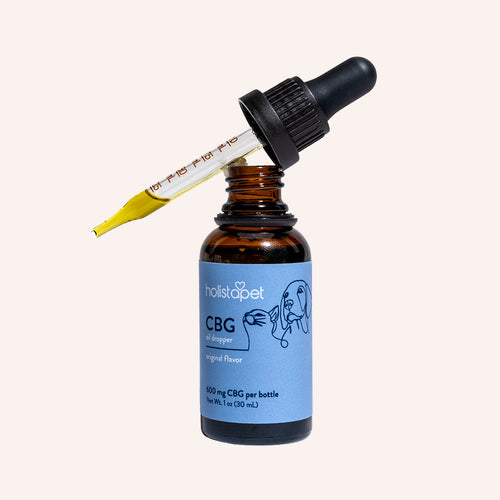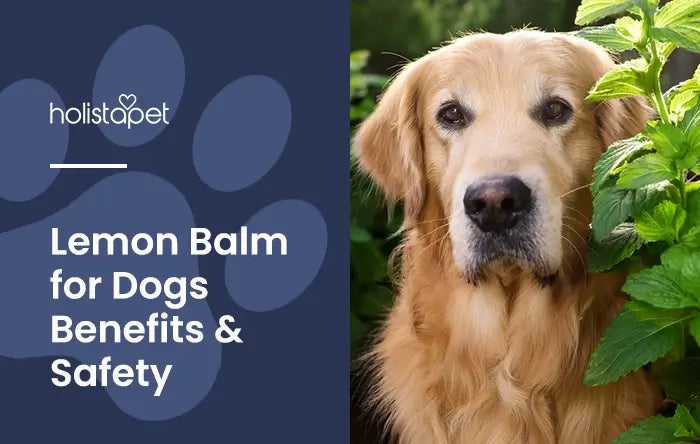"My dog keeps moving around and can't get comfortable." Sound familiar? Your four-legged pal might be sending a clear message.
Dogs don't fuss for fun; they react to how they feel inside and out. Sometimes it's mild restlessness, other times a sign of discomfort or worry. Watching their patterns, their breathing, and their posture can be extremely helpful in figuring out what's behind all that nighttime wandering.
Understanding Why Your Dog Can't Seem to Settle Down

Dogs express how they feel through movement. If your pup keeps pacing, shifting, or changing spots, they may be showing discomfort, agitation, or worried thoughts. These behaviors might seem minor but often hint at something deeper that needs attention.
Pet parents tend to notice restlessness most when the house is quiet, like after dinner, at bedtime, or during downtime. That's when fidgeting stands out the most. Watching your canine companion's posture, timing, and breathing can help figure out what's really going on.
What Restlessness in Dogs Really Means
Restlessness can be your dog's way of saying, "I'm not feeling right." When your pup can't seem to get comfortable, it could point to physical irritation, swelling, or worried thoughts that won't settle. Their body might ache, or they may just feel uneasy and unsure where to relax.
Some canines pace when they're bored or full of energy. Others shift positions because of muscle tension or queasiness. Noticing how often it happens and what's going on around them can reveal a lot. Every shuffle or sigh can tell a story about your pet's comfort and peace of mind.
The Difference Between Normal Fidgeting and a Problem
A quick stretch, a position change, or a spin before lying down is normal. But if your dog can't rest for long, wakes often, or keeps pacing at odd hours, something might be bothering them. That's when restlessness moves from a harmless habit to a possible warning sign.
Normal fidgeting tends to pass quickly. When it doesn't, your pooch may be dealing with soreness, puffiness, or a stressful experience. Owners who know their dog's usual patterns will notice when things shift.
Common Reasons Dogs Keep Moving Around
Dogs move around for numerous reasons—some simple, others more serious. When your furry buddy just can't get comfortable, it could be anything from mild soreness to a change in their surroundings. Here are some of the most common reasons pups keep moving around:
- Joint Pain or Stiffness
- Digestive Issues
- Feeling Too Hot or Too Cold
- Anxiety and Stress
- Needing a Potty Break
- Itchy Skin or Allergic Reactions
- Age-Related Changes
- Environmental Changes
Related Post: Why Is My Dog Pacing and Won't Settle Down?
Joint Pain or Stiffness
When dogs struggle to rest, sore joints are often to blame. Older dogs, in particular, may find it tough to lie down or stay still for long. That stiffness can make even soft bedding feel uncomfortable. Owners might notice their pup shifting often or hesitating before sitting.
Joint swelling or tenderness can develop slowly. Over time, it affects how dogs move, rest, and play. Gentle exercise, a comfy bed, and a chat with your veterinarian can make a big difference in helping your companion rest easier and move with more ease.
Digestive Issues
When your pup keeps moving and can't settle, it might be due to queasiness, stomach irritation, or discomfort from a new food. Dogs often pace or shift positions when their belly feels off, trying to find a spot that eases the pressure. You might notice other signs, too, like loss of appetite, gurgling sounds, or needing to urinate or defecate more often.
Digestive issues can come from eating too fast, dietary changes, or mild allergic reactions. Keeping track of your dog's eating habits, stool consistency, and behavior can help your vet decide if diet adjustments are necessary.
Feeling Too Hot or Too Cold
When it's too warm, dogs pant, pace, and move around to find a cooler spot. In chilly weather, they might keep shifting to stay warm or tuck themselves into odd corners for comfort. A dog that can't settle may simply be reacting to how the air feels against their skin or fur.
Keep an eye on body temperature cues. Warm weather often leads to excessive panting, while cold nights bring shivering or curling up tight. Adjusting the room temperature, adding a cozy blanket, or moving their bed away from drafts can help your pup rest more comfortably.
Anxiety and Stress
Worry can make dogs restless. When your pooch keeps pacing, panting, or can't stay still, they may be reacting to loud sounds, separation from their human, or some other stressful trigger. Restlessness linked to anxiety often appears during storms, fireworks, or big changes at home.
Some dogs show anxious behaviors through pacing or whining, while others cling to their favorite person for comfort. Creating a quiet spot, sticking to a steady routine, and offering gentle reassurance can help calm their nerves. If your dog's uneasiness keeps coming back, your veterinarian can guide you toward a treatment plan that supports relaxation.
Needing a Potty Break
Sometimes the reason your dog can't get comfortable is as simple as needing to go outside. When pups feel the urge to urinate or defecate, they may pace, whine, or shift positions while trying to hold it in. This kind of restlessness usually happens at night or after meals.
Pet owners might notice circling near the door, scratching, or low whining as clues. Keeping a regular potty schedule helps prevent these restless moments. If your dog still struggles to settle even after a bathroom break, it could point to an underlying cause worth discussing with your veterinarian.
Itchy Skin or Allergic Reactions
When dogs can't stop fidgeting, scratching, or licking, skin irritation might be the culprit. Allergic reactions from food, pollen, or even cleaning products can lead to constant shifting and restlessness. Your pet may move around to find a position that eases the itching or discomfort, especially during quiet moments when the irritation feels stronger.
Check for redness, rashes, or skin blemishes around their belly, paws, or ears. These signs can make it hard for them to relax. Giving your dog a gentle bath with a mild shampoo, washing bedding often, and asking your vet about treatment options can help soothe their skin and bring back calm.
Age-Related Changes

As canines grow older, their bodies and habits shift. Senior dogs may move around more because of joint aches, reduced mobility, or memory loss. They might forget where their favorite spot is or feel unsure about how to lie down comfortably. What once looked like restlessness could simply be part of aging.
Older dogs also tend to wake more during the night, pacing or whining for attention. A soft bed, gentle stretching, and a consistent daily routine can help ease these moments. If your dog's restlessness keeps getting worse, a quick checkup with your vet can rule out any serious medical conditions.
Environmental Changes
Dogs notice every shift in their surroundings. A new home, furniture rearrangement, or other pets joining the household can throw them off balance. When the environment feels different, some canines become restless, pacing or changing spots until things start to feel familiar again.
Even smaller triggers—like loud noises, visitors, or weather changes—can cause uneasy behavior. Owners can help by keeping a calm, predictable space with familiar scents and routines. Adding their favorite blanket or toy often brings comfort. Once your pup feels secure again, that constant moving around usually fades on its own.
Behavioral Signs To Watch For
Restlessness often comes with other signals that tell you more about what's going on. Paying attention to these patterns helps owners understand whether their dog's behavior is temporary or linked to something deeper. Here are some common behavioral signs to watch for:
- Excessive Panting, Pacing, or Whining
- Constantly Changing Positions While Lying Down
- Scratching, Licking, or Shifting Weight
- Unusual Sleeping Positions or Restless Nights
Excessive Panting, Pacing, or Whining
If your pup seems restless, panting heavily, or whining more than usual, it may be a sign of discomfort or worry. Dogs often do this when their body temperature rises during warm weather or when something is making them uneasy.
Watch how long the behavior lasts and when it happens. If it continues even after cooling down or settling in, it could point to discomfort or a stressful experience. Keeping notes about these episodes helps your veterinarian pinpoint the cause and suggest the right approach.
Constantly Changing Positions While Lying Down
Constant shifting or adjusting positions might mean your dog is experiencing soreness, queasiness, or mild irritation. Some pups try lying on their front legs, then switch to their side or back, hoping to find a comfortable position that relieves the feeling.
This behavior can show up in older dogs with joint swelling or younger ones reacting to something they ate. If your dog's symptoms persist for more than a few weeks, check in with your veterinarian. A quick exam and simple tests can help identify the underlying cause.
Scratching, Licking, or Shifting Weight
When dogs scratch or lick the same spot repeatedly, it’s usually their way of coping with irritation. Skin blemishes, puffiness, or mild rashes can make them restless and cause constant movement. Shifting weight from one side to the other might also point to discomfort in their paws, joints, or rear legs.
If your dog seems distracted by their own body, take a closer look at the skin and fur. Check for redness, bumps, or damp patches from licking. Keeping their coat clean, trimming fur around irritated spots, and checking in with your vet can make a big difference.
Unusual Sleeping Positions or Restless Nights

Dogs love routine, especially when it comes to sleep. So if your furry friend suddenly starts sleeping in odd positions or moving around all night, it's a sign something's bothering them. They might sprawl out to cool off, curl up tight from soreness, or keep sitting up because lying down feels uncomfortable.
You may also hear pacing, sighing, or quiet whining between naps. These small changes can point to issues like stiffness, digestive troubles, or nervous energy. Keeping the room calm, adjusting bedding, and noting when restlessness happens can help your vet figure out the real cause.
How To Observe Your Dog's Behavior
Watching your dog closely can reveal what words can't. Start by watching their posture, breathing, and movement throughout the day. A relaxed dog breathes evenly and rests in a relaxed position. A restless one shifts often, pants, or looks uneasy. Keeping these details in mind helps connect patterns to possible causes.
Try keeping a comfort journal. Note when and where the restlessness happens. Is it after meals, at night, or during loud noises? Track changes in appetite, mood, and daily activities, too. These notes can give your veterinarian valuable clues to create a clear, personalized treatment plan for your canine friend.
When To Contact Your Veterinarian
Sometimes restlessness points to something that needs professional attention. If your dog shows signs like whining, limping, or trembling while trying to rest, it's best to seek veterinary care. Persistent pacing, panting, or inability to sleep can mean they're experiencing discomfort or a more serious medical condition.
You should also watch for sudden behavior changes, like loss of appetite, difficulty lying down, or uncharacteristic aggression. These shifts may signal discomfort or another underlying cause. Your vet can perform blood work, X-rays, or other tests to find answers and build a treatment plan that improves your pup's comfort and quality of life.
Natural Ways To Help Your Dog Relax
Sometimes, the best way to calm your restless pup is with simple, natural habits. A peaceful setting and predictable rhythm can help them feel safe and secure. When your buddy feels grounded, their body follows. That means less pacing, fewer worried thoughts, and better sleep. Here are a few natural ways to help your dog unwind:
- Create a Cozy, Calm Resting Environment. Keep their favorite blanket or toy nearby.
- Adjust Room Temperature and Lighting. Aim for comfort. Not too warm or too cool.
- Offer Gentle Massage or Stretching. Helps ease muscle tension and soothe soreness.
- Provide Light Exercise to Release Energy. A short walk can do wonders.
- Maintain a Consistent Routine and Bedtime. Familiar schedules make dogs feel secure.
- Reduce Environmental Stressors Like Noise or Crowds. Quiet spaces promote true rest.
Supporting Relaxation With Natural Wellness Options

Some dogs need a little extra help to unwind, and that's where natural wellness products can do wonders. These gentle options support calmness without harsh effects, helping pets rest better and feel more at ease. Owners often find that adding natural remedies to a daily routine can improve comfort and stability over time.
Holistic alternatives like CBD (cannabidiol) can help ease tension and promote relaxation. They're designed to work with your dog's body, not against it. With the right balance of care, comfort, and consistent habits, your pooch can finally settle into peaceful, worry-free rest.
The Role of CBD in Promoting Calmness and Comfort
CBD works naturally with your dog's endocannabinoid system (ECS) to support relaxation and comfort. It interacts with receptors that influence mood, tension, and overall balance. Many pet owners turn to CBD to help their dogs feel calm during stressful moments or restless nights. It doesn't cause a "high," and when properly formulated, it's gentle enough for daily use.
Dogs who struggle with sleep, mild agitation, or muscle tension often respond well to CBD products. Over time, consistent intake can promote steady moods and easier rest. Choosing broad-spectrum CBD ensures your dog benefits from natural compounds that support well-being without unwanted effects.
How HolistaPet CBD for Dogs Can Help With Restlessness
HolistaPet stands out as a trusted name in pet wellness, offering products designed with care and backed by science. Each item is thoughtfully crafted from 100% natural ingredients, non-GMO, vegan, gluten-free, dairy-free, and proudly made in the USA.
All HolistaPet CBD products use broad-spectrum CBD, meaning they contain no THC. Only soothing, plant-based benefits for your furry bestie. Here are a few popular ways to help your dog find calm:
- CBD Oil for Everyday Calm and Wellness. Easy to measure and mix into food or water. Made with hemp seed oil and broad-spectrum CBD extract for daily comfort.
- CBD Calming Chews for Stressful Moments or Travel. Soft peanut butter chews infused with broad-spectrum CBD. Perfect for travel or stressful moments.
- CBD Dog Treats for Soothing Mild Anxiety. Crunchy treats with chamomile and L-Theanine to promote relaxation and reduce nervous energy.
- CBD Dog Treats + Joint & Mobility Care for Aches and Stiffness. Pumpkin spice and cinnamon bites made with turmeric root, Boswellia, hemp seed powder, and CBD oil to support easy, comfortable movement.
Tips for Preventing Future Restlessness
Keeping your dog comfortable starts with simple, steady habits. Routine helps them feel safe, balanced, and relaxed. When their needs are consistently met, they're less likely to pace or show restless behavior. Here are a few easy ways to help prevent future restlessness:
- Keep a Regular Exercise and Feeding Schedule. Predictability keeps your dog's body and mind in sync.
- Make Sure Your Dog Has a Safe, Comfortable Sleep Space. A soft bed and quiet corner make rest easier.
- Schedule Routine Health Checkups. Regular visits help catch problems early.
- Monitor Changes as Your Dog Ages. Small adjustments to their daily routine can make rest time peaceful again.
FAQs About Dogs That Can't Get Comfortable
Every dog owner has questions when their pup can't seem to settle down. Restlessness can come from many things: some minor, others more serious. Understanding what's normal and what's not helps pet parents respond with confidence.
Why does my dog keep changing sleeping spots?
Dogs often change sleeping spots to find the most relaxing position or the most comfortable temperature. If your pup keeps switching areas, they might be looking for a softer surface, a cooler breeze, or simply a quieter place to rest. Most dogs do this from time to time. It's part of their instinct to seek comfort.
However, frequent changes can signal discomfort or irritation. Check for signs like stiffness, skin blemishes, or soreness. If your furry friend keeps moving even after adjusting their bed or surroundings, a quick chat with your veterinarian can help rule out any underlying medical condition.
Should I worry if my dog is panting and restless at night?
If your dog is panting and restless at night, it's worth paying attention. Occasional panting can be normal, especially after play or warm weather. But heavy or prolonged panting paired with pacing may point to discomfort or agitation. These signs often mean your dog's body temperature is high or they're reacting to stress or soreness.
If the behavior continues for several nights, contact your veterinarian. They can check for possible issues like heart disease, swelling, or other medical conditions. Keeping the room cool, offering water, and creating a quiet resting space can bring quick relief while you seek veterinary care.
Can CBD really help my dog relax naturally?
Yes, CBD can help many dogs relax in a natural and gentle way. Broad-spectrum CBD interacts with your dog's body to promote balance, calmness, and overall comfort. It's a popular choice among pet owners looking for a holistic option to support their companions during stressful situations or restless nights.
CBD works without causing mind-altering effects, making it a safe choice for daily use. It can help ease tension and anxious behaviors and improve rest quality over time. For best results, choose a trusted brand like HolistaPet, known for clean, vet-approved, and third-party tested CBD products.
How do I know if it's pain or just anxiety?
It can be tricky to tell, but body language offers clues. A dog in discomfort often limps, hesitates to lie down, or avoids certain movements. You might notice trembling, stiffness, or constant shifting as they try to find relief. Anxiety, on the other hand, usually comes with pacing, whining, panting, or hiding, especially during loud noises or changes in routine.
Owners should watch when the behavior happens. If it's tied to specific events like storms or being alone, it's likely worry. If it's constant or linked to movement, soreness could be the cause. Either way, a quick vet visit helps sort it out.
When should I call the vet for restlessness?
You should contact your veterinarian if your dog's restlessness lasts more than a day or two, especially if it's paired with other symptoms. Signs like whining, limping, trembling, or labored breathing can point to discomfort or a serious medical condition. Persistent pacing or sleepless nights also mean something more than simple fidgeting might be going on.
If your dog's behavior suddenly changes—like refusing food, reacting to touch, or showing uncharacteristic aggression—don't wait it out. Veterinary care helps uncover the underlying cause and guides you toward safe, effective treatment options to restore your pup's comfort and peace of mind.
Final Thoughts: Helping Your Dog Find Calm and Comfort
When your dog can't get comfortable, it's their way of asking for help. A few simple changes, like a softer bed, a steady routine, and a calm space, can bring big relief. Paying attention to their posture, breathing, and habits gives you the clues you need to keep them happy and at ease.
For added support, HolistaPet's all-natural CBD products can help your pup relax, rest, and move more comfortably. With clean ingredients, broad-spectrum CBD, and vet-approved formulas, we're a trusted choice for pet parents who want the best for their furry friends. Calm days and peaceful nights are possible again.


 CBD Oil for Dogs - Fast Acting
CBD Oil for Dogs - Fast Acting
 Chicken Flavored CBD Oil For Dogs - Easy Dose
Chicken Flavored CBD Oil For Dogs - Easy Dose
 Salmon Flavored CBD Oil For Dogs - Highly Rated
Salmon Flavored CBD Oil For Dogs - Highly Rated
 CBG Oil for Dogs and Cats - Loved by Thousands
CBG Oil for Dogs and Cats - Loved by Thousands




Leave a comment
All comments are moderated before being published.
This site is protected by hCaptcha and the hCaptcha Privacy Policy and Terms of Service apply.